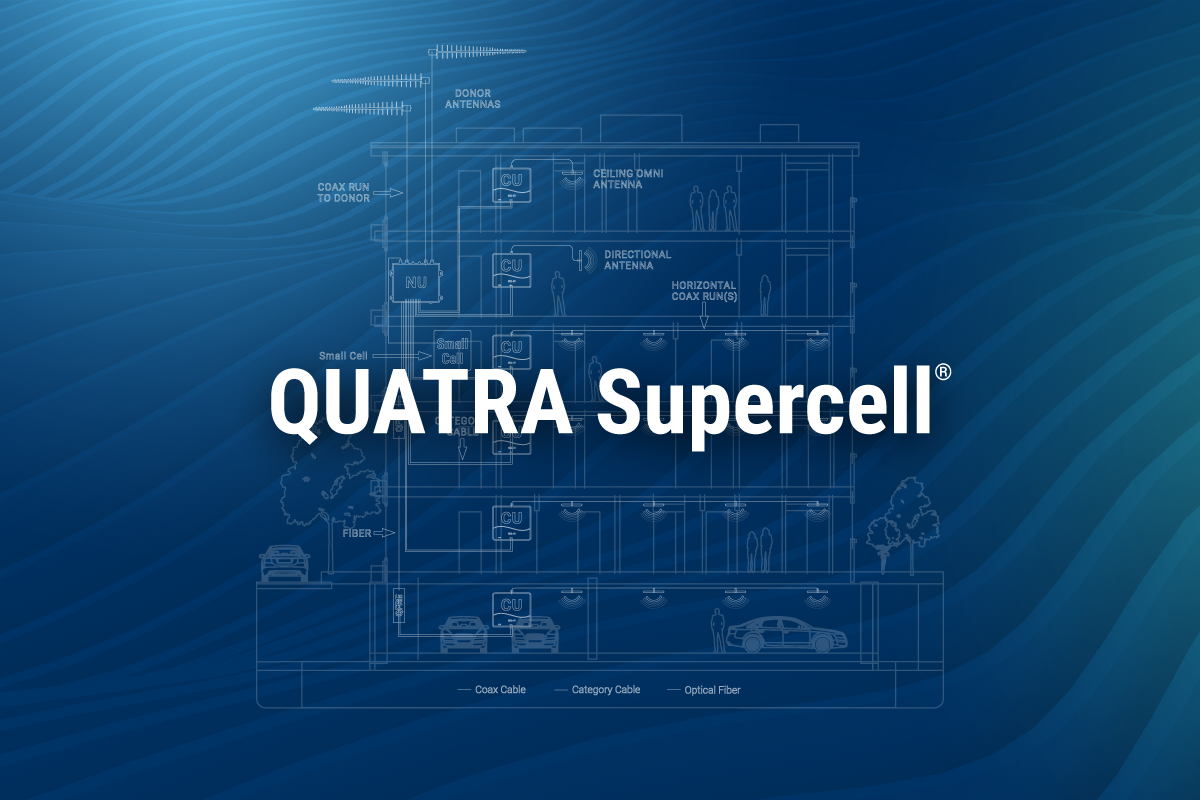One of the issues with passive DAS (pDAS) or BDA (bi-directional amplifier) systems is that the cellular signal loses strength – also known as attenuation – the further the distance the remote unit is from the head end. That’s because pDAS is an analog system in which cellular signals are distributed over coax cable that loses signal strength. The amount of loss can vary depending on cable thickness, distance, environment, and other factors. A typical passive DAS or BDA system can only provide up to 72 dB of peak gain according to FCC consumer regulations, but that signal can attenuate significantly by the time it reaches the remote units and thus the users in those areas.
CEL-FI QUATRA on the other hand is an active DAS hybrid. It sends a fully digital signal over Ethernet from the head end (i.e. the network unit) and “actively” converts it back to analog at powered remote units (i.e. coverage units). The signal therefore arrives at full power – which translates up to 100 dB of gain when deployed in off-air mode – regardless of the distance from the network unit.
To learn more about CEL-FI QUATRA and the advantages of our hybrid active DAS technology, contact one of our distribution partners.




